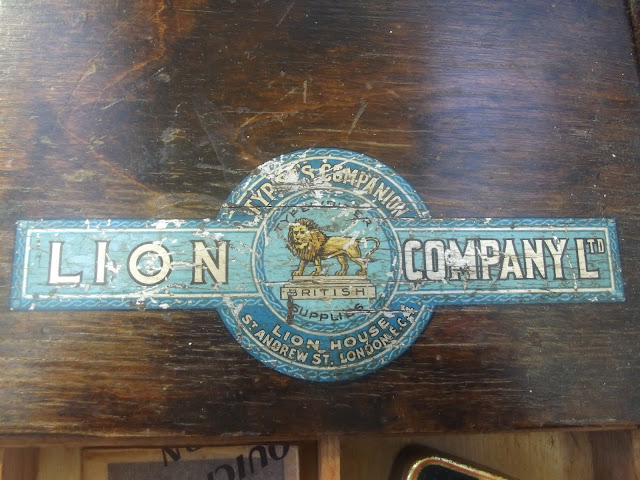Margaret Madeline Chase Smith, seen above using her Royal portable typewriter, in mid-July 1964 became the first woman to be placed in nomination for the United States presidency at a major party's convention. She was nominated at the Republican Party's national convention at Cow Palace, Daly City, California.
A little more than 52 years later, at the Wells Fargo Center in Philadelphia, Democrat Hillary Clinton became the first woman to be a major party's presidential election nominee. But she is not the first woman to run for United
States President, and was not the first to run for a major party's nomination.
Margaret Chase Smith, born in Skowhegan, Maine, on December 14, 1897, served as a US
Representative from 1940-49 and a US Senator from 1949-73, becoming the first woman to serve in both houses of Congress and the
first woman to represent Maine in either. Upon leaving office, she was the longest-serving female
Senator in history, a distinction which was not surpassed until January 5, 2011,
when Senator Barbara Mikulski was sworn in for a fifth term. Smith remains the longest-serving Republican woman in the Senate.
Barry Goldwater won the 1964 Republican presidential nomination when Nelson A. Rockefeller's improbity became an issue. But Smith got 3.84% of the vote, more than Richard M. Nixon. The national convention was one of the most bitter on record, with the
party's moderates and conservatives expressing their contempt for each
other. Smith was fifth in the presidential tally behind Goldwater, William Scranton, Rockefeller and George Romney. Goldwater infamously said, "I would remind you that extremism in the defense of liberty is no vice.
And let me remind you also that moderation in the pursuit of justice is no
virtue." As a result, many Republican moderates defected to the Democrats in the election. Democrat candidate Lyndon B. Johnson got more than 61 per cent of the popular vote and more than 90 per cent of the electoral vote to comfortably retain the presidency.
Margaret Chase Smith died in Skowhegan on May 29, 1995, aged 97.
Victoria California Claflin Woodhull was in 1872 the first woman to stand for the US presidency, representing the Equal Rights Party. Born in Homer, Ohio, on September 23, 1838, she was an advocate of free love (the freedom to marry, divorce and bear children without government interference) and an early leader of the US woman's suffrage movement. Woodhull also pushed for labor reforms.
Sisters Victoria Woodhull and Tennessee Claflin (front row), surrounded by fellow suffragists.
One of Woodhull's staunchest supporters was the newspaper editor, poet and abolitionist Theodore Tilton (1835-1907). While Tilton was an assistant to Henry Ward Beecher (1813-1887), his wife Tilly had an affair with the clergyman and social reformer. Woodhull saw Beecher's acquittal on criminal intimacy charges (the jury was hung) as reflecting double standards in society. During the 1872 presidential election, Woodhull was jailed on obscenity charges for publishing her views on the matter. Tilton might be said today to have been a visionary well ahead of his time. In backing Woodhull, in August 1871 he was quoted as saying:
Hillary Clinton has to endure some absurd abuse from Donald Trump, but these comments from the Kansas newspaper, the Osage County Chronicle, give an idea of what Woodhull had to put up with. She tried to gain nominations for the presidency again in 1884 and 1892, in the latter year standing for the Humanitarian Party, culminating in her nomination by the National Woman Suffragists' Nominating Convention.
Woodhull believed she was destined by prophecy to be president of the US. This ambition was, of course, still unfulfilled when she died at Bredon, Worcestershire, in England, on June 9, 1927, aged 88.
Belva Ann Bennett Lockwood did stand for the presidency in 1884, representing the National Equal Rights Party. She was an
activist for voting rights for women and for African-Americans, as one of
the earliest women lawyers in the US. Her bid was the first full-scale national campaign of a woman running for
president. Born at Royalton, New York, on October 24, 1830, Lockwood died in Washington DC on May 17, 1917, aged 86.
Laura Clay stood for the Democratic Party's presidential nomination in 1920. Born at White Hall, Richmond, Kentucky, on February 9, 1849, Clay was the first woman to have her name placed
into nomination for the presidency at the national convention of a major political
party, at the Civic Auditorium in San Francisco in June-July 1920. She was the daughter of abolitionist Cassius Marcellus
Clay, after whom Herman Heaton Clay, a descendant of African-American slaves, named his son
Cassius Marcellus Clay, the father of late boxer Muhammad Ali. Laura Clay died in Kentucky on June 29, 1941, aged 92.
Grace Ethel Cecile Rosalie Allen, the comedian famous as the
zany partner and comic foil for George Burns, stood for the Surprise Party in the 1940 presidential election. It was a publicity
stunt and she was not on the ballot, but she did
get write-in votes. She published a book, Gracie Allen for President and she and Burns did a cross-country whistlestop
campaign tour on a private train, performing their live radio show in different
cities. In campaign speeches, Gracie said, "I don't know much about
the Lend-Lease Bill, but if we owe it we should pay it" and "Everybody knows a woman is
better than a man when it comes to introducing bills into the house." The
Surprise Party mascot was a kangaroo. Born in San Francisco, California, on July 26, 1895, Gracie died in Los Angeles on August 27, 1964, aged 69.
She didn't fulfil Theodore Tilton's dream, but Charlene Mitchell stood for the Communist Party in 1968, becoming the first African-American woman nominated
for presidency. She was on the ballot in two states in the
general election, but received fewer than 1100 votes nationally.



























































